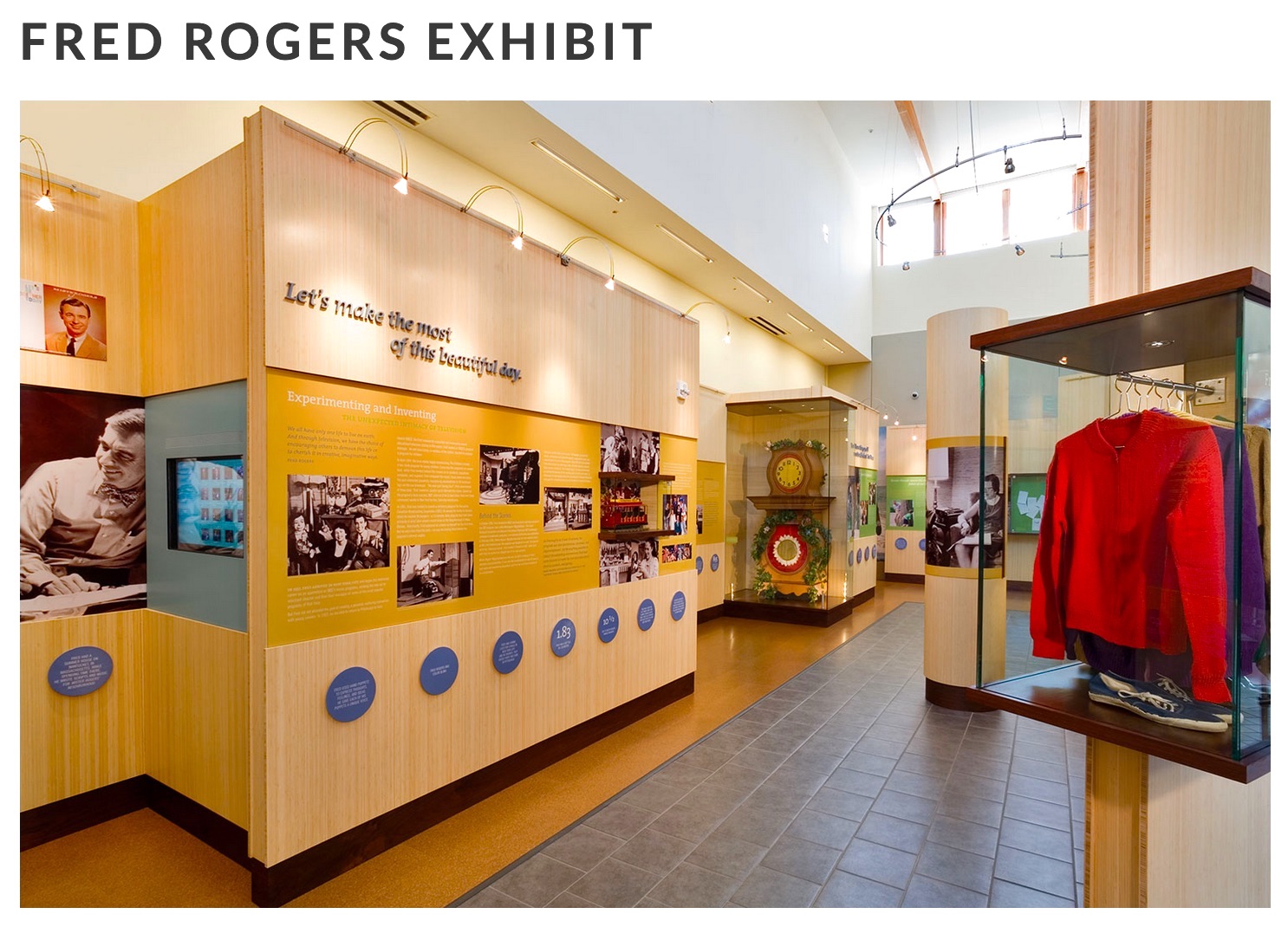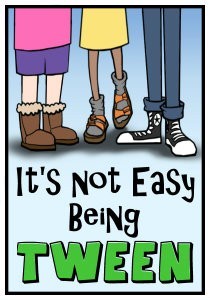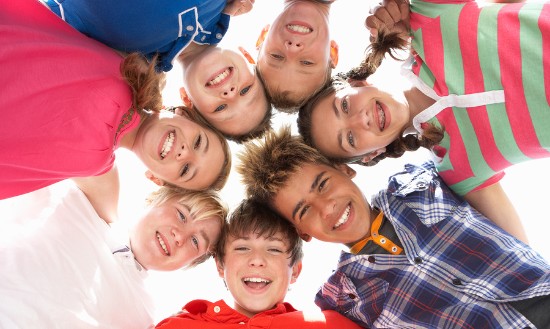Inviting Mr. Rogers into Your SEL Classroom
A MiddleWeb Blog
Every year we have a campus-wide theme and reading event. This year our theme is “Community” – inspired by Mr. Rogers and his message to be good neighbors. Our “read” is the HBO documentary Won’t You Be My Neighbor (2018).
To me, this is the perfect theme for a school district or individual school, and I look forward to bringing it into my personal neighborhood – my classroom.
Mr. Rogers’ Neighborhood and I are approximately the same age. Like many of my generation, I was heavily influenced by the show in my formative years. The show debuted in 1968 during a tumultuous and divisive time in our nation’s history. Much the same climate seems to exist now, and I can’t think of a more apropos message than being a Good Neighbor.
When I re-watch the show or read anything written by or about Fred Rogers, he is the embodiment of what I consider to be the ideal educator. I believe he was heavily influenced by the work of psychologists as well as his theological training.
In the 1943 paper “A Theory of Human Motivation,” Abraham Maslow outlined his Hierarchy of Needs and many educators continue to be familiar with the concept. Maslow believed humans could not be motivated to function at the highest levels until their needs at the previous levels were met.
In the classroom, teachers are tasked with helping students reach the highest level by making sure their physiological, safety, and “belonging-ness” requirements are satisfied. Fred Rogers tackled these topics in every show.
I also feel Fred would agree with the theories of another Mr. Rogers, Carl. Carl Rogers was a humanistic psychologist who believed in an individual’s capacity to reach “self-actualization” and fulfill their potential by achieving at their highest level. He believed that children needed to have a sense of self-worth and feel well regarded by others to achieve self-actualization as adults.
Fred Rogers always demonstrated his commitment to his high regard for children. He ended every show by saying, “You always make each day a special day. You know how: by just being you. There’s only one person in the whole world like you, and people can like you exactly how you are.” How wonderful a message to internalize.
Through his words and deeds, Mr. Rogers proved his belief in every human being having inherent value. It’s imperative for teachers to share this trait. In an interview he gave to Education World, he said,
Do you remember your favorite teachers? They were probably the ones who wanted to learn your name; who had a warm smile; who made you feel that they were glad to be there to help you learn. No matter how old or young we are, we learn best from people who care about us. That relationship grows when teachers are friendly, respectful, and interested in us as unique human beings.”
Even though social-emotional learning is a relatively new buzzword, Fred Rogers seemed to be at the forefront of a movement considered revolutionary at the time. (He was even criticized for encouraging lazy, indulgent children!) In fact, his statement is the ideal outline for an in-class SEL curriculum.
Welcoming Mr. Rogers to class
So how can teachers channel Mr. Rogers in their classrooms, build a true sense of community, and help children become good neighbors right from the start? I have a few thoughts.
Modeling. As always, modeling kind, respectful, polite, controlled behavior shows students that you walk the walk.
Setting the Tone. Greet them as they walk into class and, whenever possible, be prepared and ready to start on time.
Learning Their Names Quickly (and pronounce them correctly). On the first day of class, I ask each child to say their name aloud so that I can hear how they prefer it to be said rather than having me potentially butcher it and start off on a bad note. I might jot down a phonetical reminder if needed, and I apologize immediately if I ever mispronounce it. I tell them this is important to me because it’s about respect.
Being Polite. Rather than issuing an extensive set of rules right off the bat, discuss and practice ways to show good manners and be polite. A well-timed please, thank you, excuse me, or I’m sorry can go a long way in diffusing potential issues.
Getting to Know Them. It is crucial that every child in your care feel seen and heard. I start out the year with a student survey that I do on Google Forms (so I can make a spreadsheet) and I ask more than routine questions. Responses to questions such as What do you know well enough that you could teach others? What are you most proud of? What do you love to do outside of school? help us begin to build a relationship that will get us through the toughest of days to come.
Helping Them Bond. I have my students complete a Getting to Know You graphic. It’s a one-pager with words or images that represent their hobbies, favorite books and/or movies, a song lyric or quotation that speaks to them, and either a goal or two they have for the year or words/images that represent something that truly matters to them.
Once complete, we do a gallery walk in each class to share them, and then I display all of them together on a large bulletin board for them to read.
I also like to do a commonality activity the first week (rather than an ice-breaker which can be a bust with students who know each other well). In small groups, I give them five minutes to come up with at least three things everyone in the group has in common. The caveat is they may not use anything related to school (ex: we’re all in sixth grade), physical appearance (ex: we all have hair), or things that relate to all humans (ex: we were all born).
To make it more motivating, I challenge them to come up with commonalities that they think no one else will have or think of. Then we reveal our discoveries at the end by going group to group and sharing one item at a time. They learn a lot about each other in a short amount of time.
Minimizing Competition. I have previously shared that I think there is far too much competition in schools and much of it is not on a level playing field. Competition is our biological imperative and doesn’t really need to be practiced. Plus, I’ve found that students who stand to win a competition enjoy it more than others. Therefore, I focus on collaboration and teach the accompanying skills to get to true group cohesion.
Celebrating Everyone. Related to competition are rewards and accolades. The student who receives praise for everything often loves the attention, but not every student enjoys being singled out. In addition, some teachers find it difficult to find something praiseworthy about every child and tend to focus on a core group. Students see this and know who are the “teacher’s pets.”
It’s much better to spread the wealth and genuinely find ways to recognize every student. (They can smell insincerity a mile away, so fake praise doesn’t work.) I take pride in the fact that my classes will say that all of my students are my favorites. This is how I want them to feel, and I make a conscious effort to this end.
Communicating with Them. My personal code of conduct includes speaking to my students as if they are younger human beings and not condescending to them or lashing out. If it is not a way that I would speak to my friends, it’s not a way I should not speak to children. Over the years, I’ve heard hurtful sarcasm, yelling, chastising, name-calling, and taunting from teachers toward students. None of these are acceptable ways to treat a fellow person, and our students don’t deserve it.
Being Seen and Valued. All of your students should see themselves reflected in your classroom and in your curriculum throughout the year. I celebrate the diversity in my school and capitalize on the wealth of knowledge about the world sitting before me. I appreciate that I can learn from my students, and I know they are proud to be able to contribute to our knowledge base.

The multimedia Fred Rogers Exhibit is a public, interactive display in the Fred M. Rogers Center at Saint Vincent College, Latrobe PA.
The Impact of Mutual Respect
Another Fred Rogers quote from the Education World interview makes me feel like I’m on the right track.
When children learn more about one another, and when they know their teachers recognize and celebrate their differences, they are more likely to feel a sense of community in the classroom. Teachers foster mutual respect when they provide activities that encourage conversation, sharing, and interaction.”
In my next post I’ll write more about celebrating differences. For now, it’s time to put on my cardigan and sneakers and get to work!






































I love this article Mrs. Mizerny! As a fellow teacher, I completely agree with you. I am also honored that you are my very own daughter’s teacher. Lucky us! Have a great year.
Thank you so much. I am enjoying getting to know your daughter.
I love it ~ I happened to open the article and click on Mr. Rogers as the day was ending. All of the students knew who he was talked about how they loved the show. He planted seeds that will someday turn into orchards.
I love this and shared it with my school and district staff today, a teacher workday. Thank you for sharing.
John, I am pleased you found something of use in my post.
Have a great year!